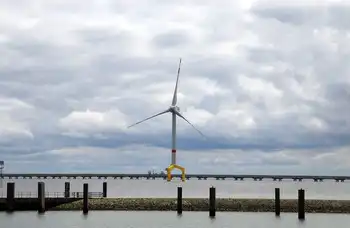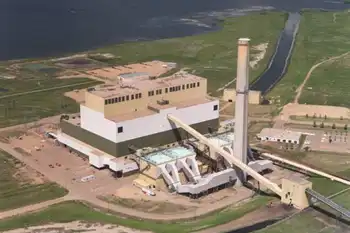Application for Ohio River turbines met by objections
By Paducah Sun
NFPA 70e Training - Arc Flash
Our customized live online or in‑person group training can be delivered to your staff at your location.

- Live Online
- 6 hours Instructor-led
- Group Training Available
Free Flow Power is seeking preliminary permits from the Federal Energy Regulatory Commission to study sites near Paducah and Metropolis to install nearly 2,500 turbines that would produce an estimated 215.5 gigawatt hours of power annually.
The hydrokinetic project uses normal river currents to produce electricity, rather than the hydroelectric process that requires a dam or diversion of water.
"It is a very long and expensive process, but it is a lot less expensive than building a dam," Jon Guidroz, Free Flow director of development said in an interview. He said it is an environmentally friendly process that doesn't emit harmful emissions into the water or air.
If the preliminary permits are granted, it would take at least five years to develop the concept and begin construction, Guidroz said. The permit that would allow for more extensive planning and testing is one of 27 filed by Free Flow along the Ohio River from the Mississippi River to east of Owensboro. Free Flow also is seeking 59 permits for projects on the Mississippi River.
The U.S. Department of the Interior has asked that the permit be denied.
"The project area includes a section of the Ohio River that has unique habitat value," Gregory Hogue, regional environmental officer said in an eight-page letter. "The environmental impacts of the proposed project and technology are completely unknown."
It also said that any site evaluation should not only include energy potential and impact on wildlife, but the impact on recreation and navigation.
The Department of Interior said that if the preliminary permit is approved, the regulatory commission should impose additional requirements to study its impact.
A second objection has been filed by the Kentucky Municipal Power Agency, the company formed by Paducah Power System and the Electric Plant Board of Princeton to develop a new, less expensive source of power for their systems. It currently is a partner in a new coal-fired generating plant under construction in Illinois.
Its protest said Free Flow Power's request for so many permits is unprecedented and could have far-reaching and long-lasting consequences for the development of the renewable power source.
It asked the commission to establish additional requirements for evaluating applications because the use of hydrokinetic technology has not been proven.
Kentucky Municipal Power also said that approving the permits would give Free Flow Power a monopoly that would inhibit competition "while it simultaneously ties the country's best hydrokinetic resources to technology that may or may not prove to be viable."
"There are a number of regulatory steps we need to take, not the least of which is environmental impact," Guidroz said. "We are aware the Ohio River has a number of endangered and protected mussels and other species. We can't just apply existing studies and assume they are complete."
Sites were selected for the turbines because of river conditions and because they are close to power lines. The electricity would be sold to distributors.
Guidroz said hydrokinetics was developed about 40 years ago and most projects have involved the use of stronger ocean tides and currents. The process has expanded to rivers and streams in Canada, Ireland and the United Kingdom.
Each turbine is about seven feet in diameter. They are placed in groups of six. They would be placed in deep sections of the river and not interfere with river traffic, even at low water levels in the summer.
The turbines are attached to the river bottom by pilings or can be placed on existing bridge pilings.
The electricity is transferred to converters on the shore line and then on to transmission lines.
The process would create only a few permanent jobs to perform maintenance duties.











